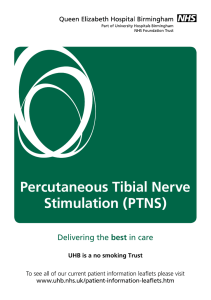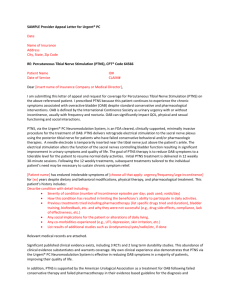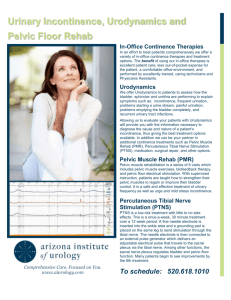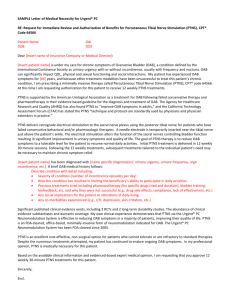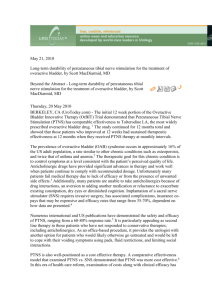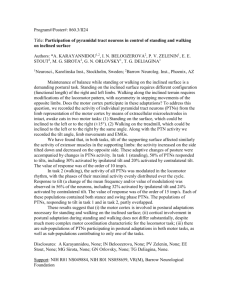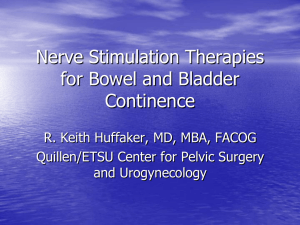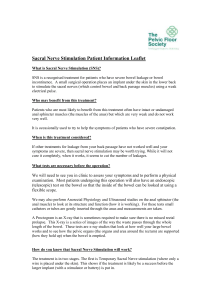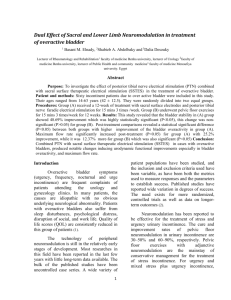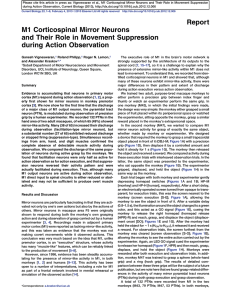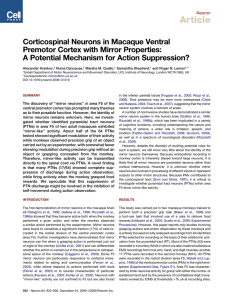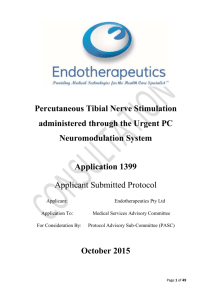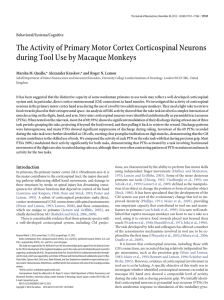Percutaneous Tibial Nerve Stimulation
advertisement
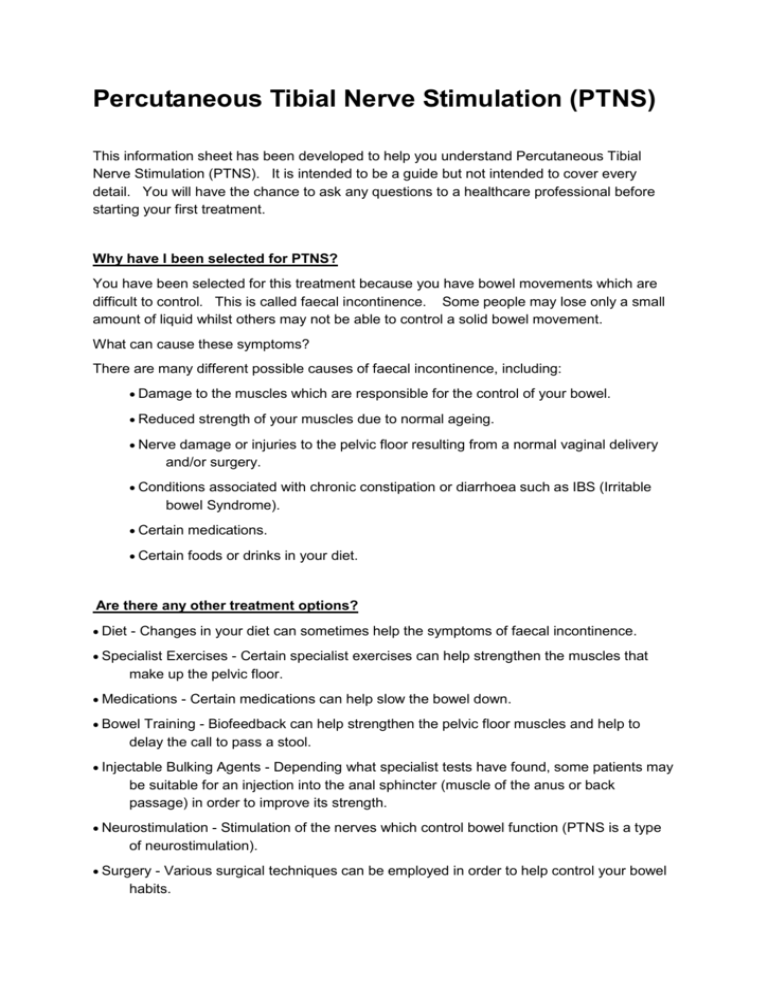
Percutaneous Tibial Nerve Stimulation (PTNS) This information sheet has been developed to help you understand Percutaneous Tibial Nerve Stimulation (PTNS). It is intended to be a guide but not intended to cover every detail. You will have the chance to ask any questions to a healthcare professional before starting your first treatment. Why have I been selected for PTNS? You have been selected for this treatment because you have bowel movements which are difficult to control. This is called faecal incontinence. Some people may lose only a small amount of liquid whilst others may not be able to control a solid bowel movement. What can cause these symptoms? There are many different possible causes of faecal incontinence, including: Damage to the muscles which are responsible for the control of your bowel. Reduced strength of your muscles due to normal ageing. Nerve damage or injuries to the pelvic floor resulting from a normal vaginal delivery and/or surgery. Conditions associated with chronic constipation or diarrhoea such as IBS (Irritable bowel Syndrome). Certain medications. Certain foods or drinks in your diet. Are there any other treatment options? Diet - Changes in your diet can sometimes help the symptoms of faecal incontinence. Specialist Exercises - Certain specialist exercises can help strengthen the muscles that make up the pelvic floor. Medications - Certain medications can help slow the bowel down. Bowel Training - Biofeedback can help strengthen the pelvic floor muscles and help to delay the call to pass a stool. Injectable Bulking Agents - Depending what specialist tests have found, some patients may be suitable for an injection into the anal sphincter (muscle of the anus or back passage) in order to improve its strength. Neurostimulation - Stimulation of the nerves which control bowel function (PTNS is a type of neurostimulation). Surgery - Various surgical techniques can be employed in order to help control your bowel habits. What is PTNS? PTNS involves sending a small electric signal to the nerves controlling the bowel and the muscles of the back passage. It is achieved by using a small needle (very much like an acupuncture needle) and inserting it behind the ankle where the tibial nerve runs. This nerve shares some of the nerve roots that supply your back passage. The needle is connected to an electric stimulator and it will send signals back up the nerve to help regulate your symptoms. Therefore during the treatment you are only required to take your shoes and socks off. What to expect during treatment? PTNS is a course of treatment. It will mean that you will need to attend the hospital every week, for 12 weeks for roughly 45 minutes each time. However if a session has to be missed we can add it on at the end. During this time you will feel electrical sensations in your ankle and foot, your foot and toes may move also. This tells us we are stimulating the right place. Once a response or sensation is achieved your 30 minute treatment begins. You will be aware of the electric stimulation but it should not be painful and may wear off over the treatment session. The sensation in your leg may last for a few hours after treatment. Side effects or risks There are no known serious complications of nerve stimulation therapy. However, it can sometimes leave some tenderness or bruising around the area where the needle has been inserted, but this is uncommon. You cannot have PTNS if you are pregnant or intend to become pregnant during the course of treatment. A heart pacemaker means you cannot have PTNS. There are some other considerations such as skin integrity or poor sensations in the leg, ankle and foot which may exclude you from treatment but this will be discussed before your first treatment. Will PTNS work? This is a relatively new non-invasive treatment and evidence at the moment shows that it can work in the short term. Long term results will emerge over the next few years. You will be asked to complete some patient questionnaires so that we can measure your progress and help to investigate this treatment further. Further Information http://www.nice.org.uk/Search.do?searchText=ptns&newsearch=true#/search/?reload
